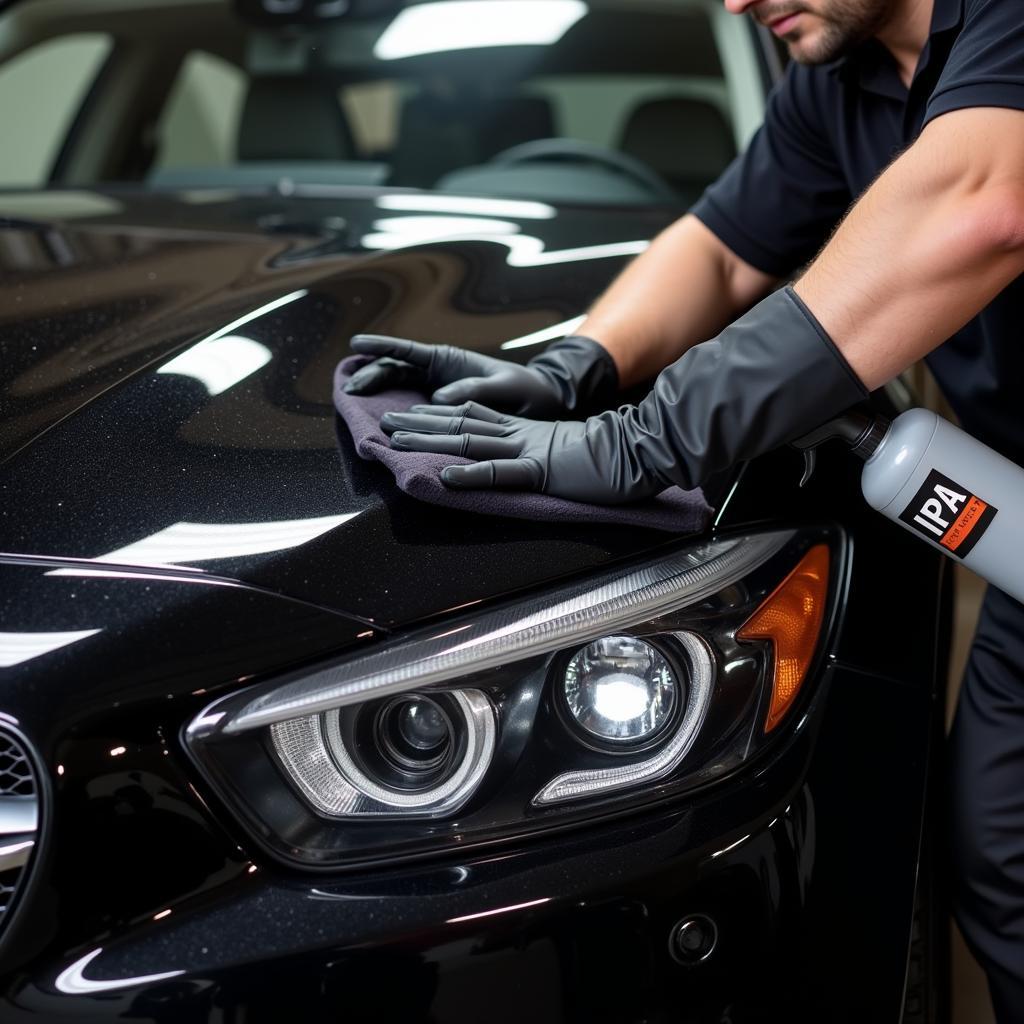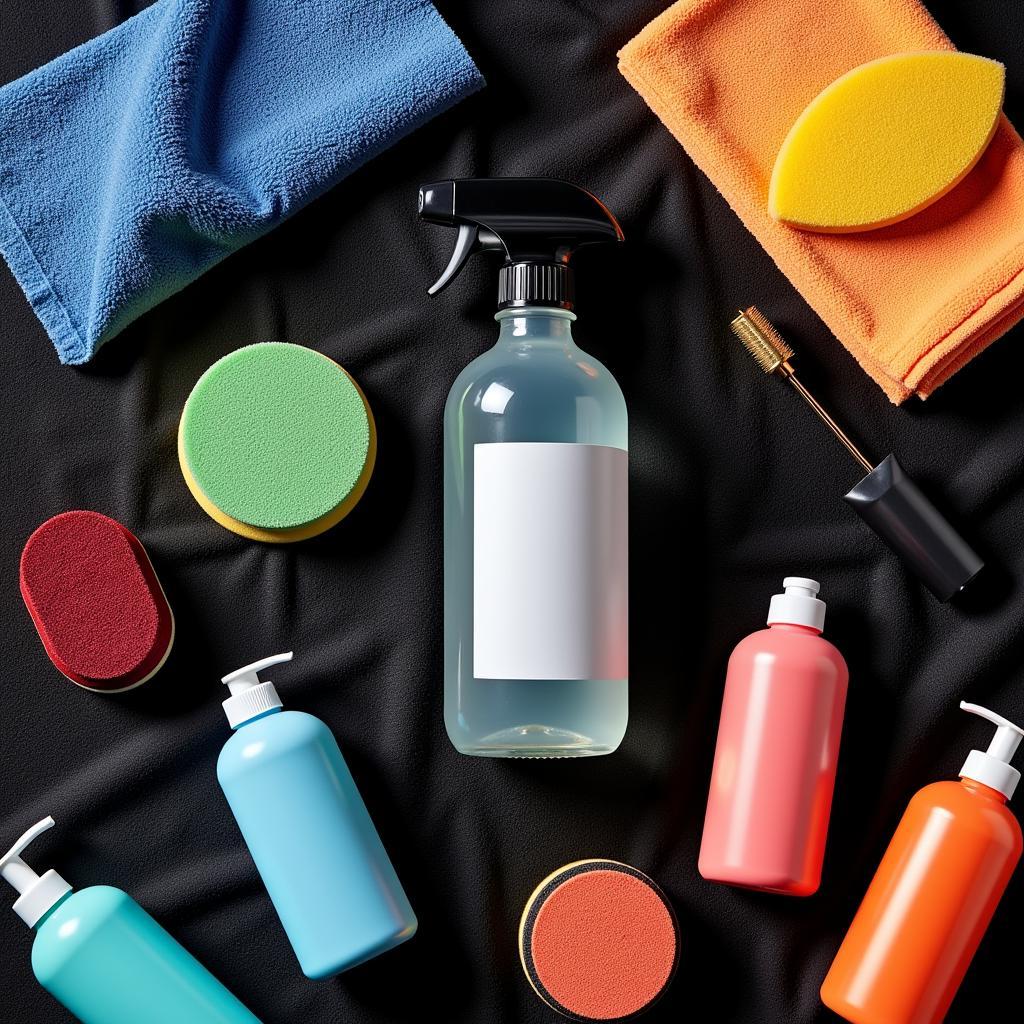In the world of car detailing, there are acronyms aplenty. But one you’ll hear often, especially when it comes to paint correction, is IPA. So, What Does Ipa In Car Detailing mean? Let’s delve into this crucial detailing component.
IPA Decoded: Isopropyl Alcohol and Its Uses
IPA stands for Isopropyl Alcohol, a powerful chemical compound frequently used in car detailing. You might know it better as rubbing alcohol, a staple in many medicine cabinets. But in the detailing world, IPA plays a crucial role in achieving a flawless finish.
Why is IPA Essential in Car Detailing?
IPA is a highly effective cleaning and prepping agent due to its unique properties:
- Superb Cleaning Power: IPA is a solvent, meaning it can dissolve and remove stubborn residues like grease, oil, silicone, and even leftover polish or wax. This is essential for prepping surfaces before applying coatings or sealants, ensuring proper bonding and a smooth finish.
- Fast Evaporation: Unlike water, IPA evaporates quickly and leaves no residue behind. This is crucial in car detailing, as it prevents water spots and streaks, which can mar the final look.
- Surface Preparation: IPA doesn’t just clean; it also prepares the surface for the next stage of detailing. By removing all traces of previous products, IPA ensures that coatings, waxes, or sealants bond directly to the paint, maximizing their effectiveness and longevity.
When Do Detailers Use IPA?
Professional detailers utilize IPA at various stages of the car detailing process:
- Before Paint Correction: IPA removes waxes and sealants, providing a clean slate for polishing and compounding, essential for removing scratches and imperfections.
- Between Polishing Steps: Switching between different polishing pads and compounds requires a clean surface. IPA ensures no leftover product interferes with the subsequent polishing stages.
- Final Prep Before Protection: Before applying a sealant, wax, or ceramic coating, a final IPA wipe removes any remaining polish residue or fingerprints, guaranteeing a pristine surface for optimal product adhesion.
 Car detailer using Isopropyl Alcohol spray on car paint
Car detailer using Isopropyl Alcohol spray on car paint
Choosing the Right IPA for Car Detailing: Concentration Matters
Not all IPAs are created equal, and the concentration plays a significant role in its effectiveness and safety for car detailing:
- 70% IPA: This concentration is widely available and effective for general cleaning and prepping tasks in car detailing.
- 99% IPA: Also known as “pure” IPA, this concentration evaporates even faster and is preferred for final wipe downs before applying coatings, as it leaves virtually no residue.
It’s generally advised to avoid concentrations below 70% for car detailing, as they may contain higher water content, leading to streaks and slow evaporation.
How to Sell Car Detailing
If you’re interested in learning more about starting and growing a successful car detailing business, check out our guide on how to sell car detailing.
Using IPA Safely and Effectively
While IPA is a valuable tool, it’s important to use it responsibly:
- Ventilation is Key: Always work in a well-ventilated area or outdoors when using IPA, as the fumes can be strong and potentially harmful.
- Gloves for Protection: Wear gloves to protect your skin from drying and potential irritation.
- Test Before Use: Always test IPA on a small, inconspicuous area first to ensure compatibility with your car’s paint.
 Car detailing supplies including a bottle of Isopropyl Alcohol
Car detailing supplies including a bottle of Isopropyl Alcohol
Conclusion
Understanding what IPA in car detailing means is crucial for achieving a professional-level finish. This powerful, versatile liquid plays a vital role in various detailing stages, from preparing surfaces to ensuring the optimal application of protective coatings. Remember, choosing the right concentration and using IPA safely will help you maximize its benefits and achieve that coveted showroom shine.

Leave a Reply